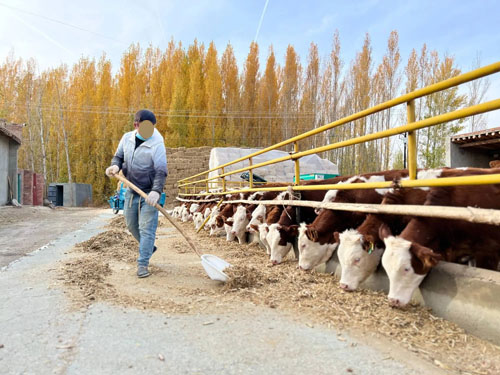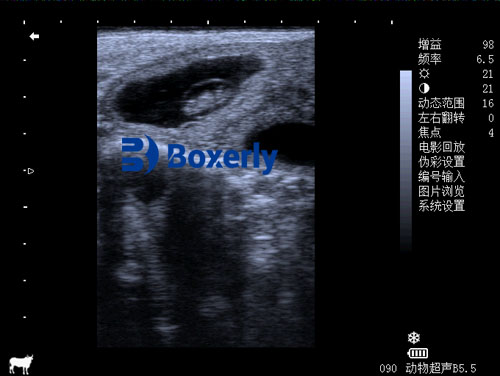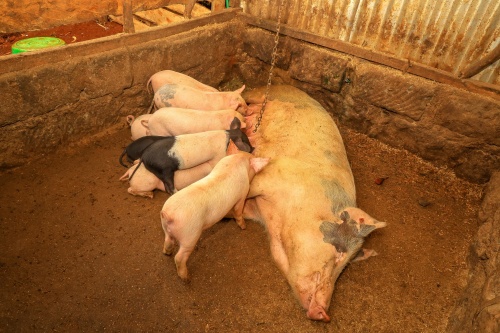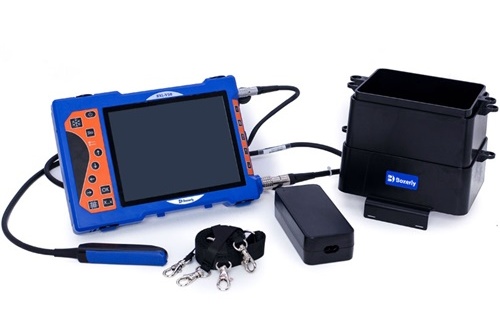In modern livestock production, precision, efficiency, and animal welfare are no longer optional—they are fundamental. For livestock farmers striving to improve reproductive performance, monitor animal health, and reduce economic risk, technology offers a growing set of tools. Among these, veterinary ultrasound—particularly real-time B-mode ultrasonography—has emerged as a key innovation. But for many farmers, a pressing question remains: Is it really necessary to invest in a veterinary ultrasound machine?

To answer this question, let’s explore how veterinary ultrasound is used on farms around the world, what benefits it offers across different types of livestock, and whether owning a device like the BXL-V50 is a wise decision for today’s producers.
Understanding Veterinary Ultrasound: What Does It Do?
Ultrasound technology allows for real-time visualization of internal structures using high-frequency sound waves. Unlike X-rays, it does not expose animals to radiation and can be used frequently without risk. Veterinary ultrasound has become a key diagnostic tool in many countries, especially for monitoring reproduction, assessing body condition, and identifying internal abnormalities.
For instance, in the U.S., Canada, Australia, and much of Europe, ultrasound is commonly used on dairy and beef farms to:
-
Confirm pregnancy in cows, sheep, and pigs
-
Monitor ovarian activity and detect reproductive issues
-
Evaluate fetal development and identify abnormalities
-
Measure backfat thickness and loin eye area for optimal finishing
-
Detect uterine infections and postpartum complications
In these systems, ultrasound is no longer a luxury—it’s a standard part of herd management.
The Economic Argument: Does It Pay Off?
One of the main reasons some farmers hesitate to buy a veterinary ultrasound machine is cost. A high-quality, farm-grade unit like the BXL-V50 typically costs more than basic farming tools. However, return on investment (ROI) is a more appropriate way to assess its value.
In the United States, a study by the Beef Cattle Institute (2023) reported that regular use of ultrasound for pregnancy diagnosis and carcass trait assessment reduced feed costs by 10–15% and improved breeding success rates by up to 20%. By identifying non-pregnant females early, farmers could remove them from the herd or rebreed them without delay—saving time, feed, and labor.
In Europe, veterinary ultrasound has also been linked to reduced antibiotic usage, thanks to better reproductive monitoring and early disease detection, aligning with the continent’s strict animal welfare and antimicrobial resistance policies.
Thus, while the initial investment may be significant, the long-term economic benefits—through improved productivity and reduced waste—can far outweigh the cost.

On-Farm Reproductive Management
For livestock farmers—especially those managing breeding herds—the primary application of ultrasound is reproductive monitoring.
Cattle:
Ultrasound is used to confirm pregnancy as early as 28 days post-breeding and to monitor ovarian structures. It can help diagnose conditions like ovarian cysts, uterine infections, and delayed ovulation—problems that are often invisible without imaging.
Sheep and Goats:
In seasonal breeders like sheep and goats, ultrasound helps determine pregnancy status, fetal number, and gestational age. In Australia and New Zealand, sheep farmers widely use ultrasound to make critical feeding and culling decisions based on whether ewes are carrying singles, twins, or no fetuses at all.
Pigs:
Ultrasound is a practical tool in pig farming for pregnancy detection and for evaluating sow condition. In intensive production systems, knowing whether a sow is pregnant—within the first 21–28 days—can make the difference between profit and loss in a tightly scheduled breeding cycle.
Ultrasound allows producers to act quickly and accurately—culling non-pregnant animals, adjusting feed rations, or initiating medical treatment—all of which reduce economic losses.

Health Monitoring Beyond Reproduction
While reproduction is the most common reason farmers use ultrasound, its value extends beyond fertility.
Body Condition and Carcass Traits:
Backfat thickness and eye muscle (loin) area are key indicators of meat yield and quality. On beef and pig farms in North America and Europe, ultrasound is used to measure these parameters to:
-
Select breeding stock with desirable traits
-
Determine the ideal time for slaughter
-
Plan finishing rations for optimal marbling and fat cover
Disease Detection:
Ultrasound can detect internal fluid accumulations, abscesses, bladder stones, or liver abnormalities. For example, in dairy herds, veterinarians use ultrasound to detect retained placenta, pyometra, or uterine fluid build-up—conditions that delay return to estrus and reduce lifetime productivity.
Postpartum Monitoring:
After calving, lambing, or farrowing, ultrasound helps detect complications like metritis or endometritis. Early detection means earlier treatment and faster recovery, preventing extended culling intervals.

Foreign Perspectives: Why Farmers Abroad Use Ultrasound
Across developed livestock systems, there’s a clear trend: producers see ultrasound not just as a diagnostic device but as a decision-making tool.
In Canada, the Alberta Beef Producers’ program promotes ultrasound to improve genetic selection and optimize feeding strategies. Real-time imaging of the eye muscle and backfat helps determine if an animal will produce premium-grade meat.
In Germany, many dairy farms conduct regular ultrasound checks on breeding cows every 2–3 weeks. This tight monitoring schedule has improved conception rates and reduced empty days.
In New Zealand, sheep producers use ultrasound to identify multiple pregnancies and allocate feed more precisely—ensuring twin-bearing ewes receive adequate nutrition while avoiding overfeeding single-bearing ones.
These examples show how ultrasound supports not just animal health but farm profitability, sustainability, and environmental stewardship.
What About Small-Scale or Traditional Farms?
Some might argue that ultrasound is only necessary for large commercial operations. But this assumption is quickly becoming outdated.
Affordable, durable, and portable ultrasound machines—such as the BXL-V50, designed specifically for farm conditions—make it feasible for even small or mid-size farms to own their own unit. This model is waterproof, dustproof, and provides high-definition imaging, with up to 7 hours of battery life, making it ideal for rugged farm environments.
With such technology now accessible, smaller farms no longer need to rely on periodic visits from a vet or technician. They can perform real-time evaluations and act immediately—saving animals, reducing labor, and protecting profits.
Weighing the Pros and Cons: A Rational Analysis
Advantages of Owning an Ultrasound Device:
-
Independence: Farmers can check animals on their own schedule without waiting for vet appointments.
-
Efficiency: Faster pregnancy checks mean quicker decision-making on culling or rebreeding.
-
Cost Reduction: Early detection prevents prolonged feeding of open females and reduces vet bills.
-
Better Animal Welfare: Non-invasive and stress-free for animals.
-
Improved Reproductive Performance: Regular monitoring supports higher conception and calving rates.
Challenges:
-
Learning Curve: Initial training is required, but many suppliers now offer online tutorials and support.
-
Upfront Cost: High-quality machines require investment, but affordable models now exist for most budgets.
-
Usage Frequency: In smaller herds, it may be used less frequently—but even infrequent use can yield critical benefits.
Conclusion: Is It Necessary?
In today’s livestock industry, success depends on making timely, informed decisions. Whether you run a 1,000-head feedlot or manage 30 dairy cows, the value of precise, real-time information cannot be overstated. Veterinary ultrasound delivers just that.
It empowers farmers to monitor reproduction, detect disease early, optimize feeding, and improve overall herd management. While not every farm may require a top-end unit, the availability of durable, farm-ready machines like the BXL-V50 means that nearly every livestock operation can benefit from having ultrasound capability on hand.
So, is it necessary to own one? If you care about improving efficiency, reducing losses, and staying competitive, the answer—more and more—appears to be yes.
Reference Sources:
-
Whitaker, D. A., & Smith, E. (2021). Veterinary Ultrasonography in Food-Producing Animals. Journal of Veterinary Imaging.
-
Beef Cattle Institute. (2023). “Use of Ultrasound for Growth Evaluation in Cattle.”
https://www.beefcattleinstitute.org/ultrasound-growth -
Alberta Beef Producers. (2022). “Genetic and Carcass Evaluation Programs.”
https://www.albertabeef.org -
DairyNZ. (2023). “Reproduction Management in Dairy Herds.”
https://www.dairynz.co.nz/animal/reproduction -
MLA Australia. (2023). “Using Ultrasound for Sheep Fetal Scanning.”
https://www.mla.com.au/research-and-development/sheep-reproduction/scanning
